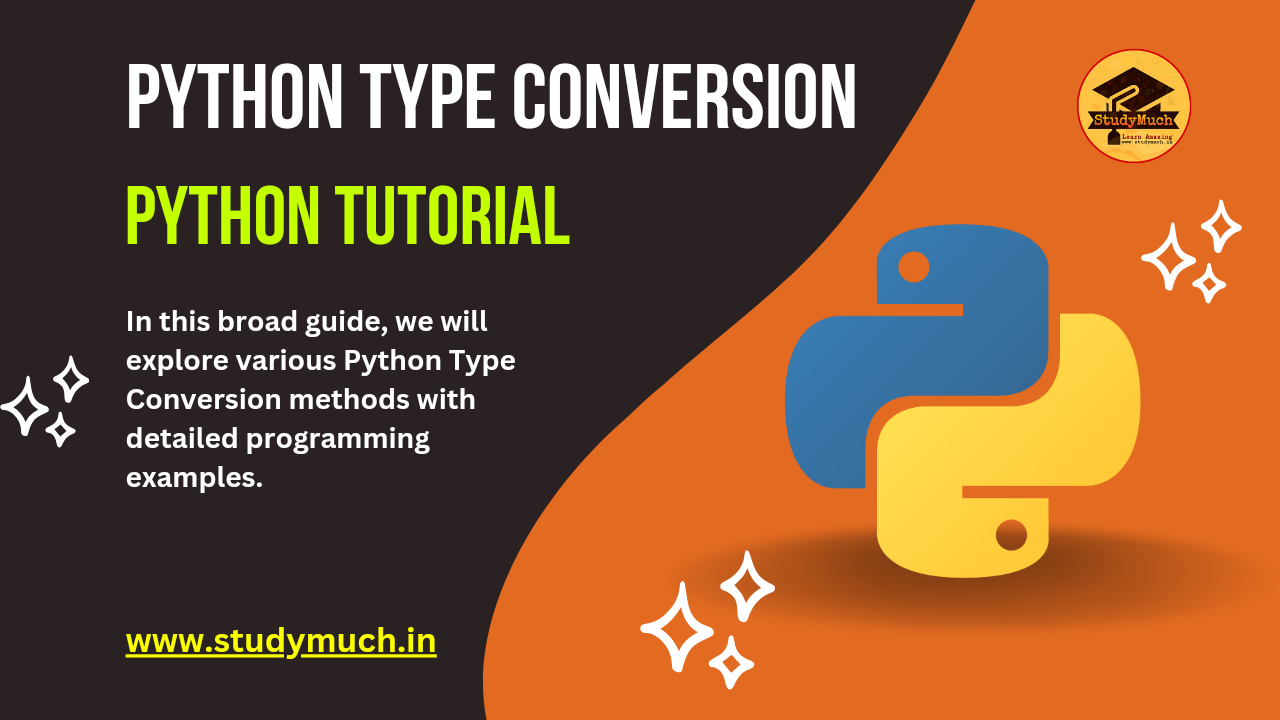Python Type Conversion

Python Type Conversion: A Broad Guide
Python is a Versatile and Dynamic programming language known for its simplicity and readability. One of its powerful features is type conversion, which allows you to change the data type of a variable from one type to another. Whether you need to convert data to strings, integers, floats, or other types, Python provides a variety of built-in functions and techniques to help you do just that. In this broad guide, we will explore various Python Type Conversion methods with detailed programming examples.
Table of Contents
- Introduction to Type Conversion
- Converting to Strings
- Converting to Integers
- Converting to Floats
- Converting Between Data Types
- Handling Conversion Errors
- Conclusion

1. Introduction to Type Conversion
Type conversion, also known as typecasting or data type conversion, is the process of changing the data type of a variable or a value in Python. It’s essential when you want to perform operations with data of different types or when you need to format data for output.
Python provides several built-in functions for performing type conversions. These functions include str(), int(), float(), and others. Let’s dive into each type conversion method.
2. Converting to Strings
Using str()
The str() function allows you to convert various data types into strings. This function returns the string version of the given objects.
Example:
num = 42 num_str = str(num) print(num_str) # Output: '42'
3. Converting to Integers
Using int()
The int() function is used to convert a value to an integer. It can convert floats, strings (if they represent integers), or other numeric types.
Examples: In this example we will convert a floating point number to integer.
float_num = 3.14 int_num = int(float_num) print(int_num) # Output: 3 str_num = "123" int_str = int(str_num) print(int_str) # Output: 123
4. Converting to Floats
Using float()
The float() function converts a value to a floating-point number (float). The float method returns the floating point version of the given object.
Examples: In this example, we’ll convert an integer to a floating point number.
int_num = 42 float_num = float(int_num) print(float_num) # Output: 42.0 str_num = "3.14" float_str = float(str_num) print(float_str) # Output: 3.14
5. Converting Between Data Types
Sometimes, you need to convert between different data types, such as converting an integer to a string or a float to an integer. Python provides flexibility for these conversions.
Examples:
Convert Integer to String:
num = 42 num_str = str(num) print(num_str) # Output: '42'
Convert Float to Integer:
float_num = 3.14 int_num = int(float_num) print(int_num) # Output: 3
6. Handling Conversion Errors
While performing type conversion, you may encounter errors if the conversion is not possible. To handle such situations, you can use error handling techniques like try and except.
Example:
user_input = input("Enter a number: ") try: num = int(user_input) print("Successfully converted to an integer:", num) except ValueError: print("Invalid input. Please enter a valid integer.")
7. Conclusion
Python’s type conversion features make it a flexible language for working with data of different types. Whether you need to convert to strings, integers, floats, or other data types, Python provides a straightforward and powerful way to accomplish this task. Understanding and using type conversion effectively will enhance your ability to work with diverse data in your Python programs.
In this guide, we covered the basics of type conversion and provided detailed examples for various conversion scenarios. As you continue to explore Python, you’ll find that mastering type conversion is an essential skill for writing efficient and versatile code. and if you have any doubt in this tutorial, you can ask in the comment section or also use WhatsApp.
Learn More;


1 Comment
tlover tonet · May 6, 2024 at 12:56 am
Only wanna say that this is very beneficial, Thanks for taking your time to write this.